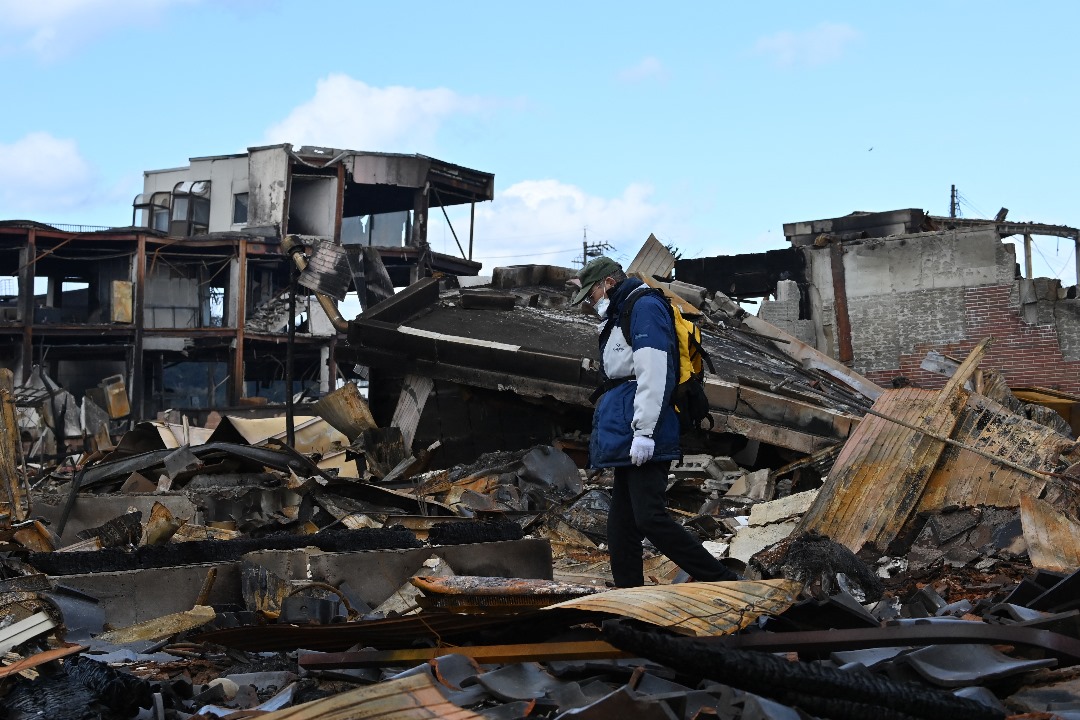
Two elderly women were pulled from the rubble on Thursday, but hopes of finding other survivors after the 7.5 magnitude quake on New Year’s Day were fading with rain, snow and falling temperatures forecast in the coming days.
Thousands of rescuers from all over Japan have been battling aftershocks and roads littered with gaping holes and blocked by frequent landslides in the central Ishikawa region to reach hundreds of people in stranded communities.
On Thursday afternoon, 72 hours after the quake, the two older women were miraculously pulled alive from the remains of their homes in Wajima, one of them thanks to a sniffer dog.
The port city of Wajima on the Noto Peninsula was one of the worst hit, with a pungent smell of soot still in the air and faint columns of smoke visible from a huge fire that destroyed hundreds of structures on the first day.
“I was relaxing on New Year’s Day when the quake happened. My relatives were all there and we were having fun,” Hiroyuki Hamatani, 53, told AFP amid the burnt-out cars, wrecked buildings and fallen telegraph poles.
“The house itself is standing but it’s far from livable now… I don’t have the space in my mind to think about the future,” he told AFP.
Authorities said on Friday afternoon that 222 people were unaccounted for, down from an earlier count of 242, including 121 in Wajima and 82 in Suzu.
The death toll was raised to 94 from 92, with 464 people injured. The dead included a junior high school boy visiting his family, reports said.
Around 30,000 households were without electricity in the Ishikawa region, and 89,800 homes there and in two neighbouring regions had no water.
Hundreds of people were in government shelters.
“We are doing our best to conduct rescue operations at the isolated villages… However, the reality is that the isolation has not been resolved to the extent that we would like,” regional governor Hiroshi Hase said Friday.
In the town of Anamizu, Sang and his four fellow Vietnamese compatriots have no heating or water in their damaged house. The toilet was full of bricks.
“We were cooking when it happened. We all dashed out of the house,” the 32-year-old told AFP.
“We had no internet connection on the day of the earthquake, but it resumed yesterday. We were able to contact family in Vietnam,” he said.
“What we need now is something to eat and drink.”
The Suzu area was also devastated, with fishing boats sunk or lifted like toys onto the shore by tsunami waves that also reportedly swept one person away.
Noriaki Yachi, 79, fought back tears after his wife was pulled from the rubble there and confirmed dead, the Asahi Shimbun daily reported.
“My life with her was a happy one,” Yachi said.
Japan experiences hundreds of earthquakes every year and most cause no damage, with strict building codes in place for more than four decades.
Earthquakes have hit the Noto region with intensifying strength and frequency over the past five years.
The country is haunted by a massive 9.0 magnitude undersea quake in 2011, which triggered a tsunami that left around 18,500 people dead or missing.
It also swamped the Fukushima atomic plant, causing one of the worst nuclear disasters in history.
AFP














